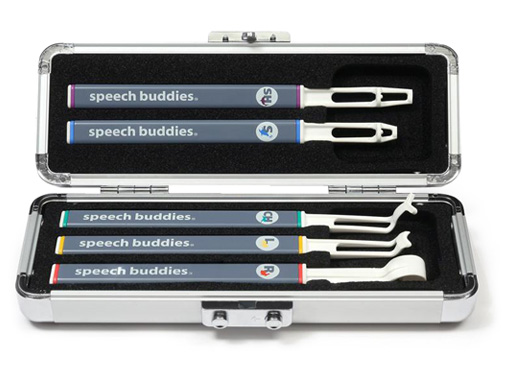Most mothers like me find it hard to cope with times of separation from the little one. But to make the child independent and to help him traverse the normal way of living, we have to learn to deal with these tough times.
I have compiled the following information for all mothers whose little petals are undergoing this phase of separation anxiety.
Why separation anxiety happens
It's unclear why some kids pass through this phase with barely a whimper while other children become consumed by it. Whatever the reason or intensity, you'll be happy to know that your toddler will outgrow this phase. When? Well, that's a tricky one. Separation anxiety tends to wax and wane throughout the toddler years. But most experts agree that the period of extreme neediness usually passes between 18 months and 2 1/2 years. By age 3 he should be fully out of it. In the meantime, here are some tips and tricks for making departures go a little smoother.

What to do...
Wave bye-bye when you leave.
It's a simple tactic but one that many parents ignore. Instead, fearing the wrath of their toddler, they try to sneak out of the house while he's otherwise engaged. Big mistake. This approach may save you the pain of watching your child cry, but it can actually make his separation anxiety more severe. If your child thinks you might disappear at any given moment without notice, he's not going to let you out of his sight. This also goes for nighttime departures. Some parents try to avoid the whole ordeal by putting their child down for the night before the babysitter arrives. That's all well and good — if he doesn't wake up. But suppose he does. You don't want him surprised — and possibly terrified — to wake up and find you gone.
Help your child look ahead.
Although your child's ability to communicate is still hindered by his limited vocabulary, he understands much more than he can say. So prepare him for your departure by talking about the event ahead of time. Make sure your child knows where you are going and when you'll be back. You may also want to give him details, such as who will be watching him and what sort of activities he can look forward to doing. To that end, it's also important to talk about your child's sitter with great enthusiasm. Your child looks to you for reassurance, and if you say things like "I think Bella is so much fun, don't you?" he'll be inclined to agree. To gauge how much of your conversation he's absorbing, follow up with simple questions like "Where are Mommy and Daddy going?" or "Who's going to watch Kenny while Mommy and Daddy go to dinner?"
Look on the sunny side.
Separation anxiety isn't merely a toddler thing — you may not be thrilled by the prospect of leaving either. But if you let your apprehension show, your child's almost certain to pick up on it. Besides, a dramatic farewell will just validate your child's feelings of insecurity. So try to stay calm and positive — even if he's hysterical. Talk to him evenly and reassure him that you'll be back soon. To keep the situation light, try adopting a silly parting phrase such as "See you later, alligator" or your own made-up alternative. Getting your child in the habit of responding with "After a while, crocodile" will also help serve as a distraction.
Try a transitional object.
Having a reminder of Mom or Dad may help your toddler cope in your absence, so when you go out, leave him with a personal memento. It can be just about anything — a photograph, an old sweater of yours, or a special pin for him to wear. It's possible that the token might have the opposite effect, though, by serving as a constant reminder. So check with the babysitter to see if your child seemed agitated by it. A security object — a blanket, a stuffed animal, or even his very own thumb — can also be a source of solace.
Play "name that feeling."
A true understanding of emotions is still years away for your toddler, but he can learn to put simple labels on his feelings. When your child starts to panic, tell him: "I know that you're sad that Mommy's leaving. What you're feeling is called 'missing.' When Mommy leaves she has those 'missing' feelings too." "Sometimes all a child needs is a way to express his fears," says child psychologist Donald Freidheim, director of the Schubert Center for Early Childhood Development in Cleveland, Ohio. "Teaching him a name for what he's feeling helps defuse the anxiety."
Set up gradual transitions.
If you're leaving your child for an evening out, ask the babysitter to arrive a half hour ahead of time. This gives the two of them time to get acquainted while you act as a calming presence. If you're starting with a new long-term childcare provider, you may want take a day or two off work — or see whether the sitter can come on the weekend — and do a few activities as a threesome. Whenever your child seems happily engaged with his babysitter, recede into the background. If your child brings you a book to read, for example, redirect him with "Why don't you see if Mary wants to read that book with you?" Or, if he wants to be picked up, suggest that he let the new caregiver do the honors. Some kids are so clingy, though, that they won't give a new sitter a chance, as long as Mom (or Dad, whoever is the primary caretaker) is an option. So if possible let the secondary caretaker be the go-between. "It happens at daycare facilities all the time," says Freidheim. "When Dad drops his toddler off, the child jumps right into the action, but when Mom tries to leave, the same kid dissolves into tears." For these kids, the transition may go more smoothly if the less-available parent acts as the middleman.
Head out at the same time.
Good-byes are always easier when it's your child who does the exiting. Instead of you leaving him behind, have the babysitter take him for a quick trip to the park or out for a stroll as you head out the door. Make sure your child understands that you're going out as well. Otherwise he'll be doubly upset when he returns to find the house empty.
Involve him in an activity.

Allow your toddler and his caregiver to get engrossed in an activity before you leave. When the time comes for you to go, give your child a quick kiss good-bye and make a beeline for the door. He may still cry, but the activity can serve as a distraction soon after your departure.
Let him learn to cope.
No parent wants her child to feel any unnecessary sadness, but coping with separation is one of the many stresses your child will have to learn to manage in life. Sometimes doing nothing — especially if you've already tried everything — is the best advice. "Learning to cope is an important developmental task," says Freidheim. "Your child has to learn that there are times when he's going to be unhappy." If your child's clinging is so severe that you can't even cross the room without a protest, for example, you may be making the situation worse by constantly caving to his demands. If you know that he's safe, it's okay to let him cry a bit. In a matter-of-fact voice, reassure him that's everything's okay, then go ahead and do whatever it is you need to do — without feeling guilty.
Tips courtesy baby center...












